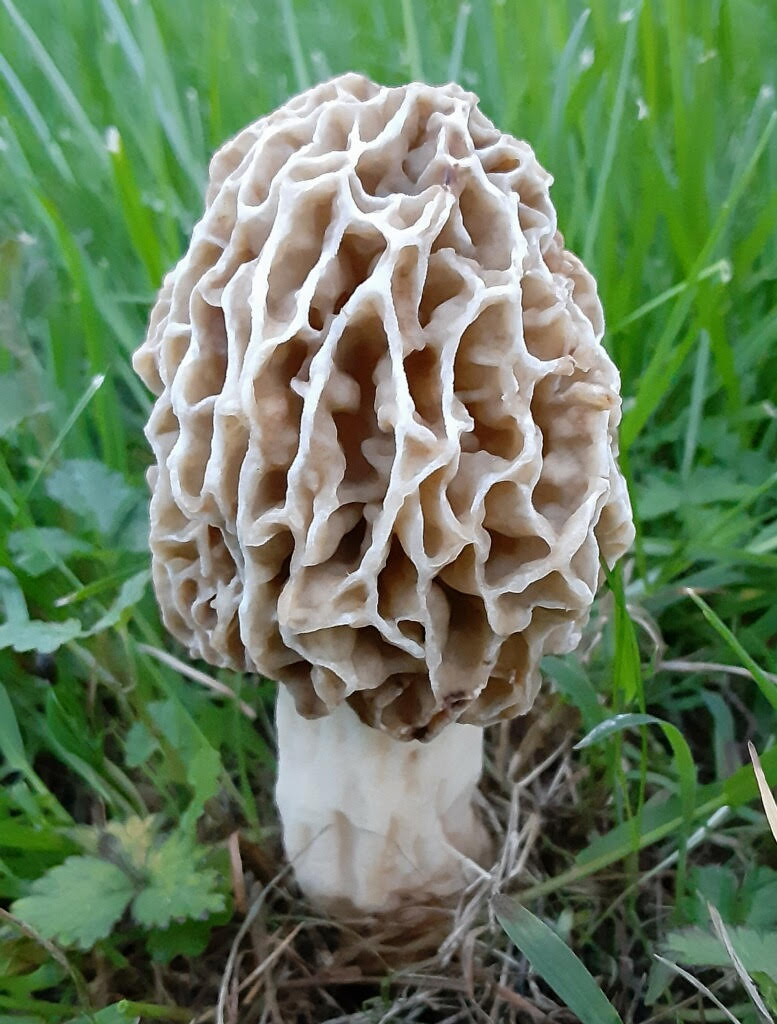By Susan Sprout
Up until the 1960’s, fungi were considered plants and categorized in the plant kingdom. After extensive chemical and DNA testing, they were placed in their own separate kingdom. Morels are an ascomycete, or sac fungus, because their spores are produced in microscopic sacs that then release them to the winds.

It seemed every time I googled something this month, a photo of morels showed up on the screen. I knew what they were because one popped up in my friend’s yard last year. Oh, how I longed to have one appear in mine as well! Several days after my husband mowed our yard for the first time this spring, a Yellow Morel appeared. What a beauty it was, with its white-ribbed stem and unusual bumpy and pitted yellowish-tan cap! The pits and hollows are where its spore-making sacs, the asci, are located. Here’s hoping lots of its creamy ocher-yellow spores have dispersed in my yard and underground. We do have two dead apple trees that, along with other mixed hardwoods like ash and elms, are favored habitat for this species of morel, Morchella americana. Trees, as they deteriorate, provide all the essential nutrients that morels need to sustain themselves, which they do by using their extensive mycelium (masses of tubular filaments) to absorb food and water. They may come back in the same place every year if the weather is favorable. Similar to Earth-like planets astronomers are looking for in space, in the soil down here, Yellow Morels have their own habitable or Goldilocks zone. They cannot grow in very hot climates or very cold climates.
My resource book, Mushrooms of the Northeastern United States, indicates there are more than 100,000 species of fungi described so far, and 64,000 of them are ascomycetes, ranging in size from pinhead to moderately large. The truffles of Italy and France are members of this group, too. No, I did not harvest my morel for food, although I understand they are delicious when prepared properly. They are extremely toxic if eaten raw. Perhaps the poison in their caps kept animals from consuming them before they reproduced. It worked – they have been living on earth for over 154 million years.

